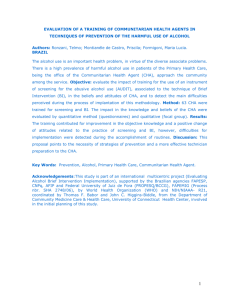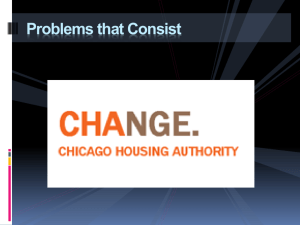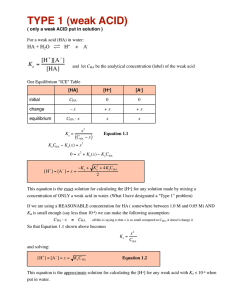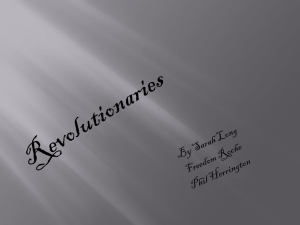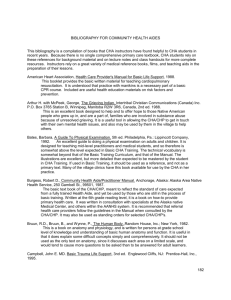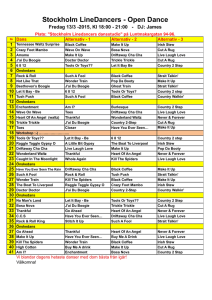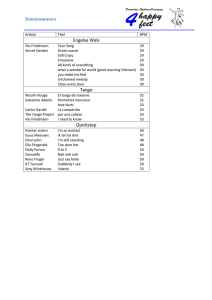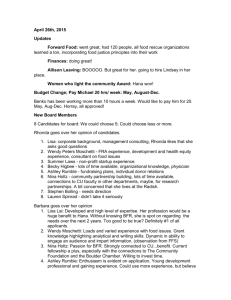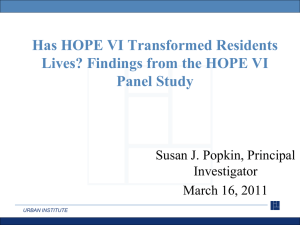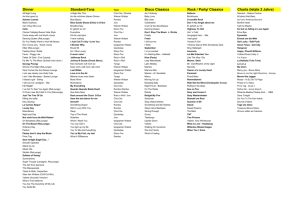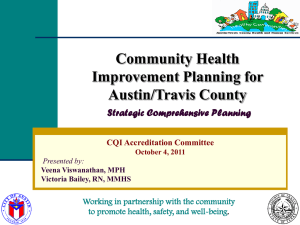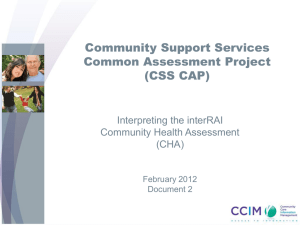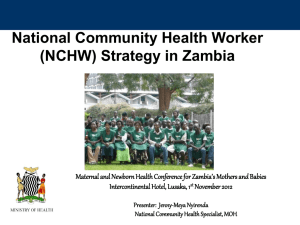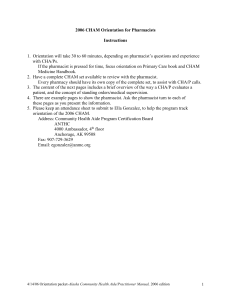History of Public Housing in Chicago
advertisement
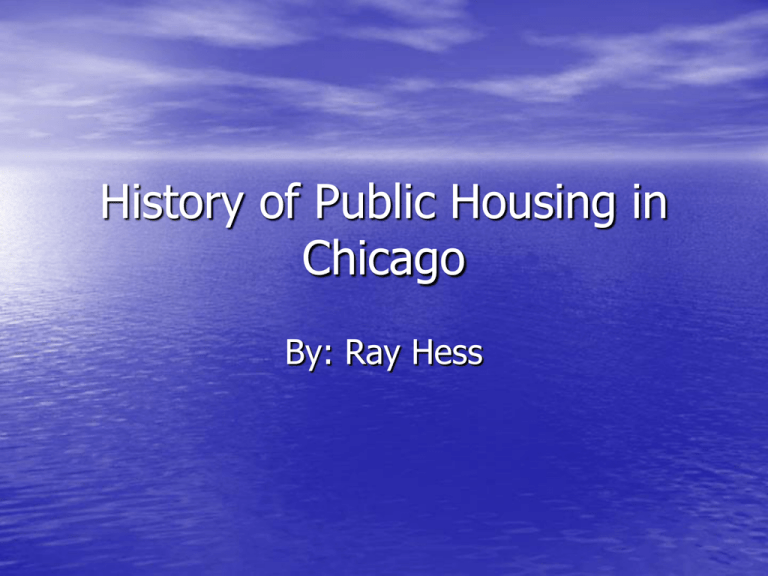
History of Public Housing in Chicago By: Ray Hess In The Beginning • The initial goal of public housing: Provide decent housing for poor and low income households. • Chicago Housing Authority (CHA) founded in 1937. • Responsible for all public housing in Chicago. First Public Housing Projects • Made possible by the Public Works Administration & then the federal Housing Act of 1937 • Prior to World War II, there were four projects. Projects Opened in 1938 • Jane Addams Houses – Near West Side – Comprised of 32 buildings – 1,027 families Projects Opened in 1938 • Julia C. Lathrop Homes – North Side – 925 Families • Trumbull Park Homes – Far South Side – 426 Families The Other Project • Ida B. Wells Homes – Built for black families – Far larger than other projects – Housed 1,662 families – Met with much opposition Racial Segregation • The Neighborhood Composition Rule • Managers were selective in choosing tenants from applicants • Had to be one employed breadwinner in the family • Tenants had to behave according to prescribed rules World War II • CHA was redirected to create housing for workers in the war industry • Altgeld Gardens – Built in Riverdale – 1,500 units – Black War Workers Post World War II • CHA provides several thousand units of temporary housing for Veterans • Neighborhood composition rule was abandoned – Short-lived policy of racial integration was introduced – A series of violent white/black confrontations resulted Housing Act of 1949 • Provided substantial funding for public housing • CHA was ready with a map of proposed sites • City council rejected this map altogether 1950’s & 1960’s • High-rise projects took one basic form • Larger than earlier developments • Averaging about 1,027 apartments • Most were built in superblocks • Many projects reached 15-19 stories in height • In style, they were modern, but plain 1950’s & 1960’s • Cabrini-Green – Began with 586 units in 1942 – Extension was built in 1958 – William Green homes built on adjacent site in 1962 The State Street Corridor • Narrow zone of • • public housing More than 4 miles long The Corridor included: – Stateway Gardens (1958) – Robert Taylor Homes (1962) CHA Building Stats • By 1968, CHA built • 168 high rise buildings Approximately 19,700 apartments for families Gautreaux v. CHA • 1966 - Tenants sue CHA • Agency was continuing racial segregation by building projects in the ghetto • Federal judge banned CHA from building additional family housing in black residential areas • Agency was ordered to build housing elsewhere in the city CHA after Gautreaux • Almost all housing built by CHA was for elderly tenants • Housing that could be built in white sections of the city • Between 1959 & 1976, 46 developments, totaling 9,607, units were built. 1990’s • HUD takes control of the CHA – Mismanagement and poor performance were two main reasons • HUD introduces radical change of policy • Between ’96 & ’97, several high rise buildings • • were demolished CHA eventually gained control of the federal government CHA undertook continued demolition and redevelopment plans Cabrini-Green Today Cabrini-Green Today Cabrini-Green Today
